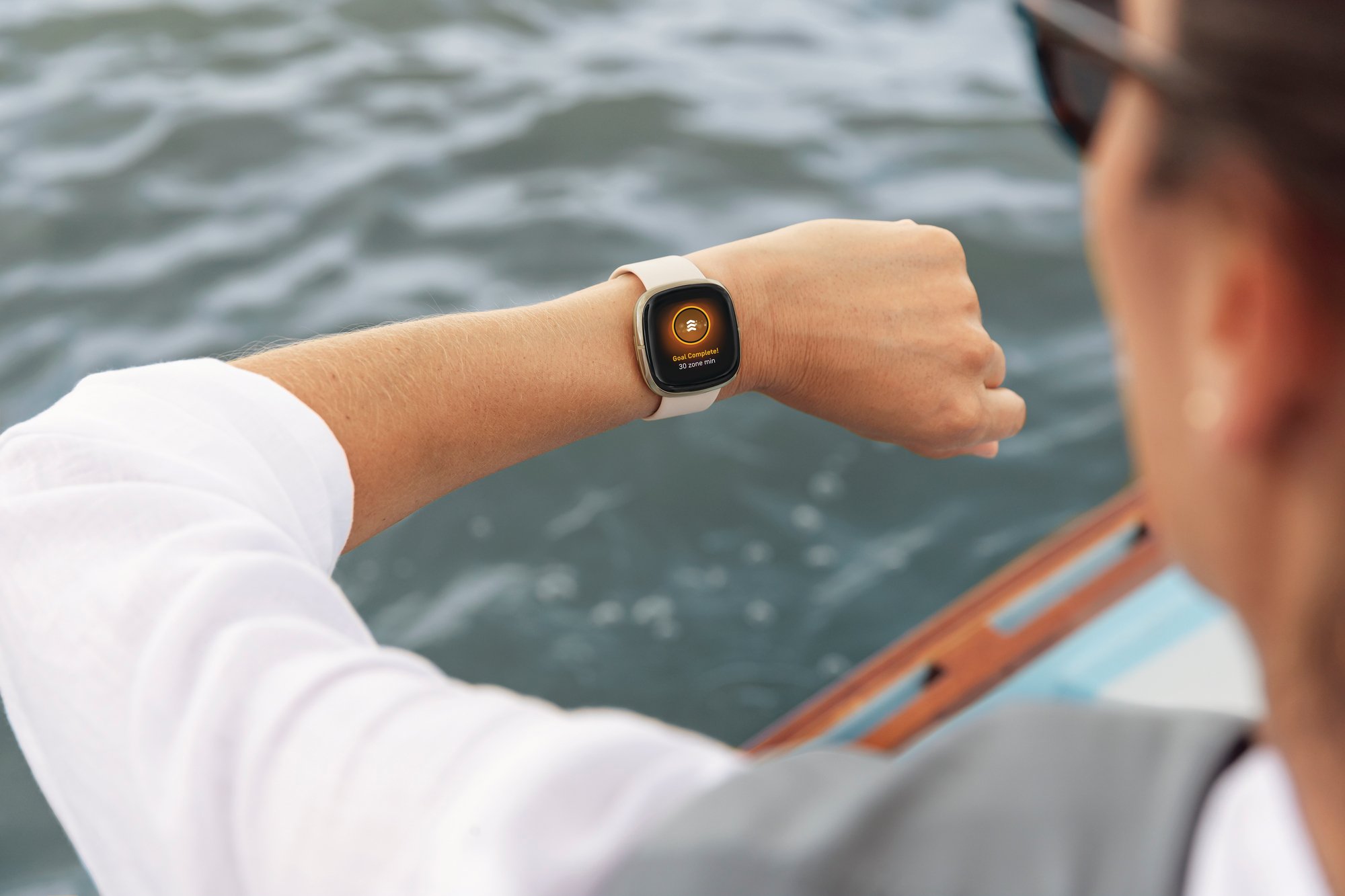
Image Source: Fitbit
Fitbit's (FIT +0.00%) management team was challenged with disappointing device sales last quarter, and James Park, Fitbit's CEO, indicated the problem was a mass market adoption issue.
When looking at the technology adoption curve and utilizing the U.S. market as a proxy, we have successfully captured a large portion of the innovator and early adopter segments in tracker market. We believe the early and late majority segments of the tracker market represents an additional significant target opportunity of between 40 million to 80 million new tracker customers.
These new users would represent a doubling of Fitbit's addressable market and the company thinks the answer to getting these users is a smartwatch. In the most recent call, Fitbit's management team gave no indications when a smartwatch would be released, but that didn't stop the company from talking about it. The yet-to-be-released smartwatch would have a focus on fitness and health, capabilities from the company's recent acquisitions such as long battery life, digital payments, and a long awaited app store.
Let's look at the details of what Fitbit has in store for its smartwatch.
Focus on Health and Fitness
Fitbit users have come to expect a core set of features for tracking health and fitness data from their Fitbit device, the smartwatch should be no different. After all, the company's mission is "to empower and inspire you to live a healthier, more active life."
Recently, Fitbit has been emphasizing software development efforts on "coaching and guidance" features. A smartwatch with a larger screen would make it easier for users to get coaching feedback delivered directly to their wrist. Currently, Fitbit's FitStar software application offers three exercise routines that can be used directly on the large screen of the Fitbit Blaze. Enabling users to follow along with workouts without having to fumble for their phone should make these coaching features attractive to more users. But there's a problem. The Blaze's help guide has a warning that reads, "Fitstar workouts are battery intensive". This is where the assets from Fitbit's other acquisitions come into play.
Using the assets from its acquisitions
Fitbit has purchased assets from two smartwatch companies, and digital payments company Coin. In the most recent earnings call Park said, "I think the three acquisitions that we made give us a very good foundation for creating a really compelling smartwatch product."
Fitbit's recent acquisitions have a lot to bring to a new device. The previously released products from Vector and Pebble sport a Kindle-like screen that is "always on" and an app store. Vector has a 30-day battery life, which is significantly longer than anything on the market, and a case that is water resistant to 50 meters. Pebble has a built-in microphone that allows voice recognition to respond to messages and record notes. Lastly, the Coin acquisition brings near field communication (NFC) capability to enable digital payments.
Some or all of these features would be welcomed to the smartwatch as a compliment to the robust fitness features already included in the Fitbit lineup. But, the feature that makes a smartwatch "smart" is the app store that enables third party developers to create applications. Fitbit's lack of an app store has limited the potential market opportunity for the company's devices and this was a key reason for the Pebble purchase.
Fitbit's app store
Pebble and Vector have apps such as Weather, Maps, Uber, Evernote, TripAdvisor and even the Domino's Pizza delivery tracker app. It's not clear whether these apps would work on day one of the Fitbit smartwatch release, but the third party apps store should provide a more compelling value proposition to attract customers to Fitbit's products and ecosystem.
Internally, Fitbit is likely to use the app store to drive capabilities for its new Enterprise Health business. When Fitbit purchased Pebble, James Park indicated that this acquisition would help "build the tools healthcare providers, insurers and employers need to more meaningfully integrate wearable technology into preventative and chronic care."
In the earnings call, Park called out that these developer tools would help with partnerships like United Healthcare. The insurer has a program called UnitedHealthcare Motion where employees get free or reduced-cost Fitbit devices and can earn up to $1,460 in savings in health reimbursement account (HRA) credits by completing activity and fitness goals. Park said that "...the UHC [United Health Care] app basically that was running on Charge 2, things like that are going to be a lot easier going forward with things like Pebble."
Management is excited
In the earnings call James Park was asked what would characterize a Fitbit smartwatch. His answer was surprisingly revealing.
I would say definitely a focus on health and fitness, a focus on long battery life, broad platform compatibility, and I think our existing brand and large community of users... there is going to be a large emphasis on... the developer ecosystem... So excited to see that come out in the product at some point.
Investors should be excited to see the new product, but only time will tell if a Fitbit smartwatch will be able to double the company's addressable market as management has projected.





